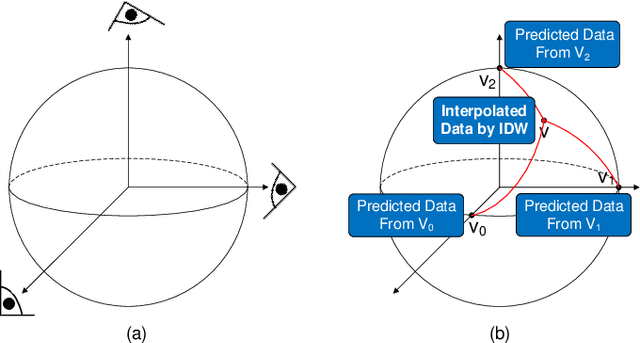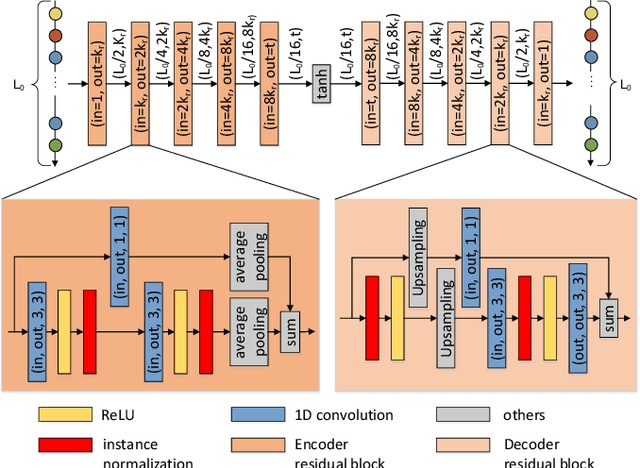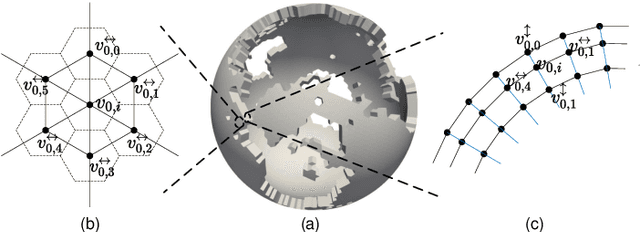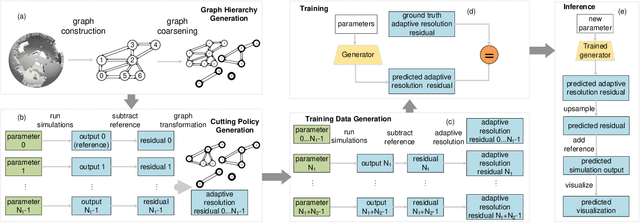Neng Shi
Explorable INR: An Implicit Neural Representation for Ensemble Simulation Enabling Efficient Spatial and Parameter Exploration
Apr 01, 2025Abstract:With the growing computational power available for high-resolution ensemble simulations in scientific fields such as cosmology and oceanology, storage and computational demands present significant challenges. Current surrogate models fall short in the flexibility of point- or region-based predictions as the entire field reconstruction is required for each parameter setting, hence hindering the efficiency of parameter space exploration. Limitations exist in capturing physical attribute distributions and pinpointing optimal parameter configurations. In this work, we propose Explorable INR, a novel implicit neural representation-based surrogate model, designed to facilitate exploration and allow point-based spatial queries without computing full-scale field data. In addition, to further address computational bottlenecks of spatial exploration, we utilize probabilistic affine forms (PAFs) for uncertainty propagation through Explorable INR to obtain statistical summaries, facilitating various ensemble analysis and visualization tasks that are expensive with existing models. Furthermore, we reformulate the parameter exploration problem as optimization tasks using gradient descent and KL divergence minimization that ensures scalability. We demonstrate that the Explorable INR with the proposed approach for spatial and parameter exploration can significantly reduce computation and memory costs while providing effective ensemble analysis.
VDL-Surrogate: A View-Dependent Latent-based Model for Parameter Space Exploration of Ensemble Simulations
Jul 29, 2022



Abstract:We propose VDL-Surrogate, a view-dependent neural-network-latent-based surrogate model for parameter space exploration of ensemble simulations that allows high-resolution visualizations and user-specified visual mappings. Surrogate-enabled parameter space exploration allows domain scientists to preview simulation results without having to run a large number of computationally costly simulations. Limited by computational resources, however, existing surrogate models may not produce previews with sufficient resolution for visualization and analysis. To improve the efficient use of computational resources and support high-resolution exploration, we perform ray casting from different viewpoints to collect samples and produce compact latent representations. This latent encoding process reduces the cost of surrogate model training while maintaining the output quality. In the model training stage, we select viewpoints to cover the whole viewing sphere and train corresponding VDL-Surrogate models for the selected viewpoints. In the model inference stage, we predict the latent representations at previously selected viewpoints and decode the latent representations to data space. For any given viewpoint, we make interpolations over decoded data at selected viewpoints and generate visualizations with user-specified visual mappings. We show the effectiveness and efficiency of VDL-Surrogate in cosmological and ocean simulations with quantitative and qualitative evaluations. Source code is publicly available at https://github.com/trainsn/VDL-Surrogate.
GNN-Surrogate: A Hierarchical and Adaptive Graph Neural Network for Parameter Space Exploration of Unstructured-Mesh Ocean Simulations
Feb 21, 2022



Abstract:We propose GNN-Surrogate, a graph neural network-based surrogate model to explore the parameter space of ocean climate simulations. Parameter space exploration is important for domain scientists to understand the influence of input parameters (e.g., wind stress) on the simulation output (e.g., temperature). The exploration requires scientists to exhaust the complicated parameter space by running a batch of computationally expensive simulations. Our approach improves the efficiency of parameter space exploration with a surrogate model that predicts the simulation outputs accurately and efficiently. Specifically, GNN-Surrogate predicts the output field with given simulation parameters so scientists can explore the simulation parameter space with visualizations from user-specified visual mappings. Moreover, our graph-based techniques are designed for unstructured meshes, making the exploration of simulation outputs on irregular grids efficient. For efficient training, we generate hierarchical graphs and use adaptive resolutions. We give quantitative and qualitative evaluations on the MPAS-Ocean simulation to demonstrate the effectiveness and efficiency of GNN-Surrogate. Source code is publicly available at https://github.com/trainsn/GNN-Surrogate.
 Add to Chrome
Add to Chrome Add to Firefox
Add to Firefox Add to Edge
Add to Edge